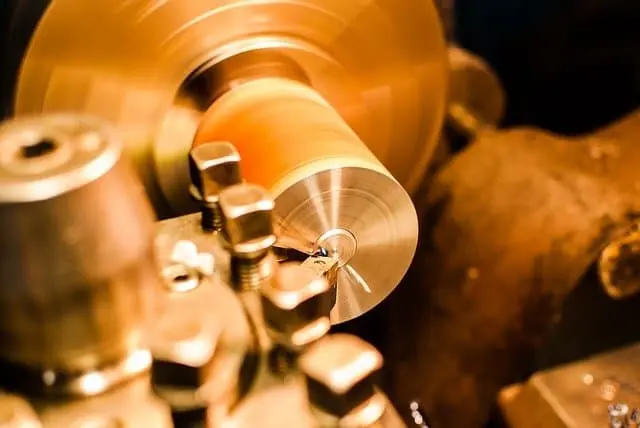
How to use cnc lathe machine
A CNC lathe cuts, drills, and grinds on a tiny scale to produce small parts for various purposes using CNC programs. It consists of a computer-controlled machine with a rotary table. These machines are similar to lathes but are much smaller and often used for tasks requiring high accuracy and precision. Let us see how to operate them.

Understanding How to operate machine
Using the CNC Lathe machine requires one to understand the computer programming of the CNC machine. The complexities that come with the lathe machine, training, and skills required are fundamentals in the lathe machine industry.
A Quick Guide to CNC Lathe Machine Attachments
Lathe bed
That is where the tool turret travels over. It is hard so that it is not easily affected.
Headstock
It contains the lathe machine’s motor, drives the spindle, and the chuck is on the spindle.
Chuck
The chuck has multiple parts, and it is the gripping component of the material to be machined.
Tailstock
It has a powerful gripping force for long components.
Footswitch
It is also known as foot pedals. They are used to actual the chuck and tailstock quill.
Control panel
That is the brain of the lathe machine. All the programs are inside the control panel.
Tool turret
The tools are on the tool turret, and the tool turret is for component machining.
Tips for Quick CNC Lathe Chatter Control
Understand the program
Failure to understand the program leads to inaccuracy and several attempts. If the program is not yet in the machine, load it into the lathe. Use a USB drive to transfer programs from the computer to the lathe machine. Old computers use a serial connection to the computer. Load the workpiece into the lathe. The chuck should have a tight grip on the workpiece.
Load tools into the lathe
Collect the tools you are going to use for the task. Load the tools into the lathe machine. The process includes placing the turret slots in the correct position. If you are using a program you are unfamiliar with, consult the manufacturer for clarity where you do not understand.
Be open to manual speed control
You have an advantage already on the automation of CNC machining. Speed can be constant depending on the user. However, I advise you to master manual speed control since you will be dealing with different materials requiring a certain speed for the CNC lathe machine. Your activities must remain accurate and successful on soft and hard materials.
Note and use your offsets
Each tool has precise axis offsets that make it cut accurately. Axes differ from one manufacturer to another and from one lathe tool to another. Be careful and observant when setting the axes to offset. There has to be the correct offset for each lathe tool, which does not mean it has to be the same as the one recommended by the supplier.
Set the work offset
Rotate the turret to any cutting tool that you have set offset. Run the spindle and jog the cutter manually. It has to face off the end of the workpiece, and that should leave a smooth surface. Rework the position of the tool under the Z-axis work offset.
Turn on the coolant pump
Turn on the coolant pump as you are about to start running the machine. Move the nozzle to the coolant stream to hit the tool’s tip.
Run the part program
Check the parts and connections so that you start running the machine. You have to stay ready to stop the machine if something goes unplanned. Stay alert for adjustments and possible accidents.
CNC lathe tool setup
Prepare yourself for selecting and loading your tooling. The machine has to be fully powered down, and there should not be a risk of the lathe machine turning on by accident, leading to injuries or damage to equipment. The loading part has to be secured, and the stock is held by tightening screws at each end in a chuck.
Clean the lathe machine and the surfaces of the CNC lathe machine. Clean the debris and chips since they affect the performance of the lathe machine. Depending on the part you are cleaning, you can use a coolant wash-down or brush. The CNC lathe machine handles a wide variety of tools and machining techniques.
Do not push the chip into sensitive parts when using high-pressure air for cleaning. Load your tools, including the tool changer that comprises tools needed by the g-code program. However, it is not a must to have a tool changer. It would help if you kept your lathe tools available, which need to be popped into the spindle quickly.
Set the tools onto the tool holder. I advise you to keep a list of the needed tools and name them according to their numbers in the g-code program. Each tool holder has its requirements for maximum performance that you have to keep. Warm up the machine and the spindle. Please do not rush to start the lathe machine without testing it for speed and accuracy. That ensures minimum thermal expansion since the lathe machine has to change from cold to running temperature.
The axes and spindle have to be well-lubricated for a smooth run. Set tool length offsets. The machine must know the tool’s tip length and gauge point. The tool length has to be correct and accurate. Incorrect tool length leads to a collision that damages the lathe tool. Set tool diameters for the use of cutter radius. Install work holding. There is a wide range of work-holding solutions.
A specific task requires a particular tool. Choose the appropriate one for your project. Make sure the lathe tools are operating where they should be. The operation has to be in sync. Enter the program and start running it.
CNC Lathe Machine G-Code
G-code is the programming language used to control CNC machinery. It consists of codes and data that tell the machine what to do at a specific time to run an activity. The programmed codes work with the correct tooling.
They are ideal for repeatable part manufacturing, consistent and accurate, and the flexibility within the program produces different parts. Even when using a complex CNC machine, the language is in simple terms for better understanding.
CNC Lathe Machine Operation
Check the machine as you make sure that the oil and coolant levels are complete. The work area has to be clear of loose tools, and the air supply has to meet the requirements of the lathe machine. If you do not know how to service the lathe machine, refer to the manual.
Turn on the machine as you locate the breaker at the back of the lathe machine. Load the tools into the carousel following the CNC program tool list order. Mount the part in the vise. Make sure it is secure. Set tool length offsets and set part offsets. Load the CNC program and run the machine in the air.
You are allowed to run the program when you are sure that everything is accurate. Make required adjustments that suit the design you are running. Switch off the CNC machine when done. Remove the tools from the spindle and part from the vise. Clean the work area and store your machine and tools in a secure and protected environment.
CNC Lathe Machine Maintenance
- Routine maintenance is necessary on a CNC lathe machine. Change tools when they wear out and when not performing accurately.
- Clean the machine and the working area.
- Sharpen the tools for maximum performance.
- Check the oil filter line.
Special tools used in operating CNC machine
Drill bit
Drill bits perform multiple cutting operations. They come in different models. The twist drill makes holes in the workpiece. The center drill locates the hole before drilling, and the ejector drill is for deep hole drilling.
Side and face cutter
The teeth are either straight or staggered. They have teeth on the sides and around the circumference. They are for unbalanced cuts and cut slots and grooves with fast feed rates.
Slab mill
They mill flat surfaces. They do not have side teeth and are for heavy-duty machining operations.
Thread mill
Threads are for cutting internal and external threads and penetrating hard materials.
Fly cutter
It consists of one or two tool bits within a solid body. It makes shallow cuts and a smooth surface finish.
Feeding
Feeding is the rate at which the cutter engages the part, and the speed is in units of minutes. The feed rate depends on the material being cut, the material of the cutter, and the desired surface.
Filing
Lathe filing is the process that involves shaping, finishing, and polishing cylindrical items. Precision and cutting are what you get from the process, and long-angle lathe files are used.
Finishing
Finishing is known as surface finishing, the last step of CNC machining. It involves removing flaws and excess material and improving the item, strength and resistance. Adjustments are allowed in the finishing stage, and edges are cut, resulting in the final surface finish. See our CNC Lathe vs Manual Lathe comparison & Guide on Using a lathe.
- Grain and Sheen: Teak Oil versus Danish Oil Uncovered - January 10, 2024
- The Cherry on Top: Crafting the Perfect Cutting Board - January 9, 2024
- Polyurethane Water-Based vs Oil-Based: Choosing the Right Finish - January 8, 2024
